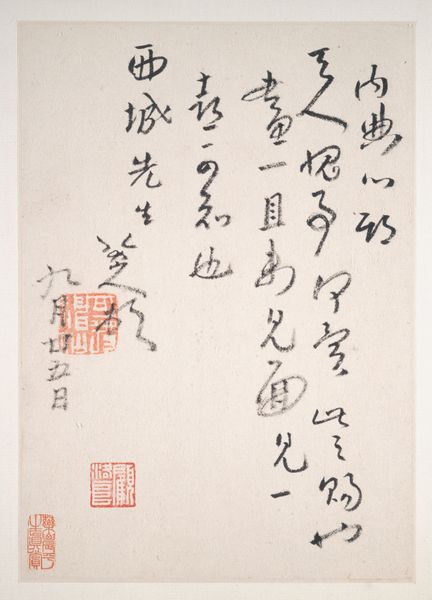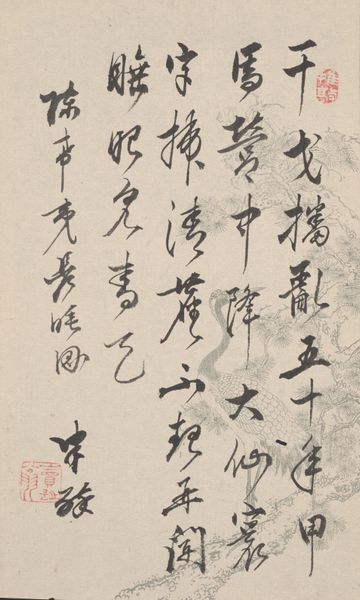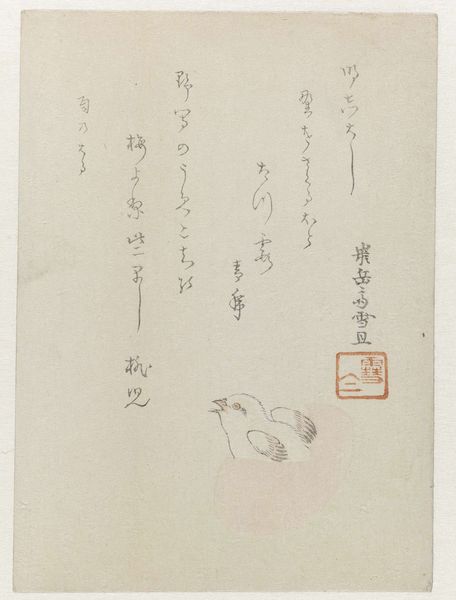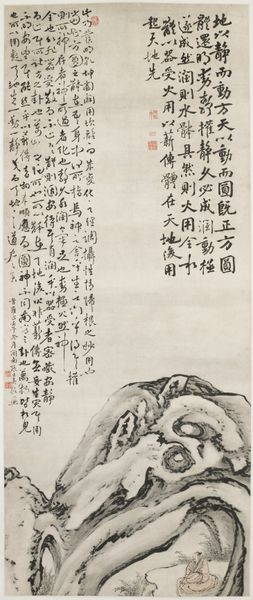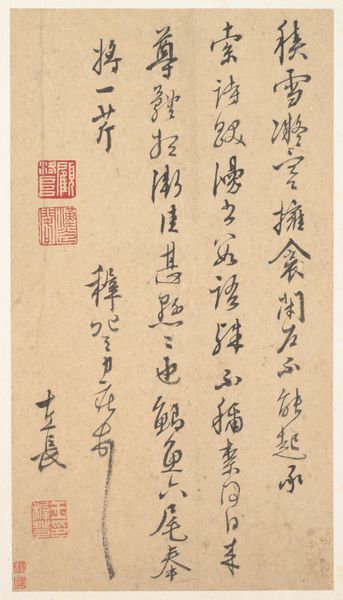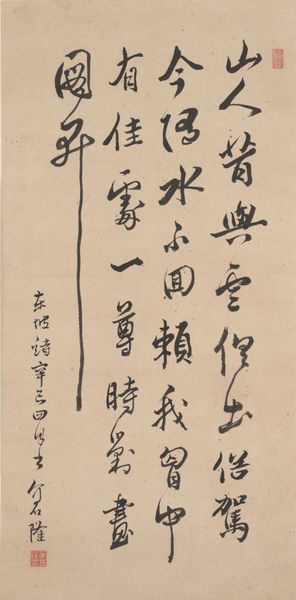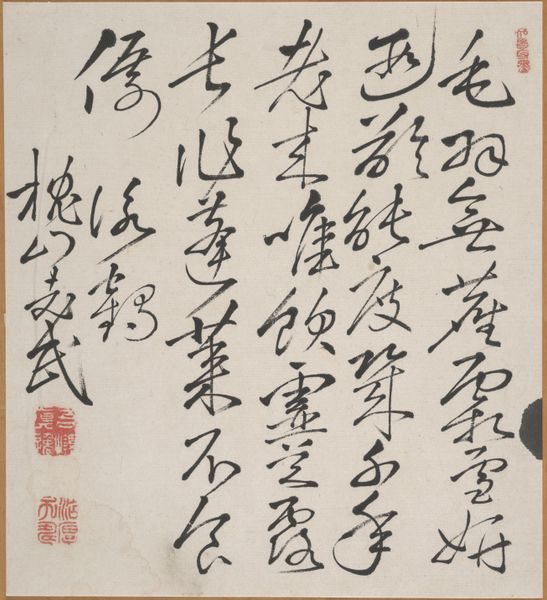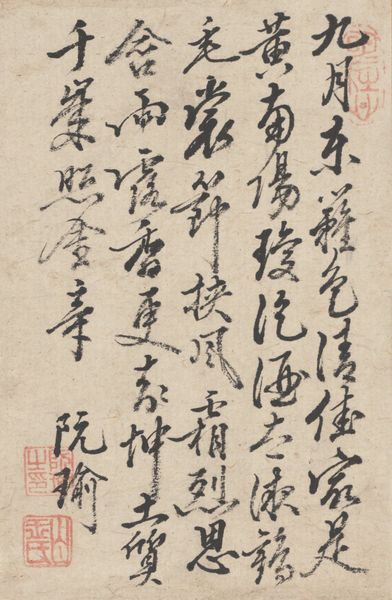
drawing, paper, hanging-scroll, ink
#
drawing
#
animal
#
asian-art
#
ukiyo-e
#
japan
#
paper
#
hanging-scroll
#
ink
#
calligraphy
Dimensions: 9 1/16 × 5 3/4 in. (23.02 × 14.61 cm) (image)41 9/16 × 9 in. (105.57 × 22.86 cm) (mount, without roller)
Copyright: Public Domain
Curator: What a lovely, simple composition. I see serenity, a gentle pace of life reflected in this quiet moment. Editor: Let's dive in. We're looking at "Two Turtles," a 19th-century ink drawing on paper in the style of a hanging scroll. It's from Japan and the artist is Hosokawa Rinkoku. You mentioned serenity; does this drawing invoke something deeper for you? Curator: The turtle is, of course, a widespread symbol of longevity, resilience, and wisdom in many cultures, but specifically, within the visual vocabulary of Japan, it represents something more. Its association with Urashima Taro connects it to the timeless realms of legend and the undersea dragon palace, linking earthly existence with a cosmic and karmic scale of time. Editor: That connection to Japanese folklore is essential. Consider its creation context. The Tokugawa period saw a rise in naturalist observation through art and science—a burgeoning naturalism in art coincided with an appreciation for moral values, sometimes projected onto animals like these turtles. Are they merely turtles, or symbolic vehicles meant to carry a didactic message of wisdom and measured action? Curator: Didactic perhaps, though its spartan brushstrokes seem focused on the contemplative quality. The placement on a hanging scroll enhances the symbolic association and calls back to traditional settings such as tearooms, where calligraphy and imagery are intended to enhance mindful perception. I suppose you’d say hanging scrolls of this period are the Instagram feeds of their day? Editor: Interesting comparison! Though unlike ephemeral social media images, these drawings held societal value through exhibitions and displayed permanence, as emblems of cultural status that reflected aesthetic taste. They carry historical implications well beyond mere artistic representations of animal life. Curator: So, the symbolic weight interacts dynamically within the space and shapes the beholder. I understand better how seeing it in its full cultural milieu enhances appreciation beyond what an image or description could fully reveal. Editor: Exactly. Viewing the "Two Turtles" isn’t just about appreciating the artist’s technique; it's about appreciating how its form intersects with cultural expectations and societal influences, and what the circulation of such images reflected about their socio-political context. Curator: Now I feel a newfound depth contemplating what was at first an admittedly tranquil image, but what I've learned today reflects something very different than its original visual language implies. Editor: Yes. Next time you encounter this lovely art object at the Minneapolis Institute of Art, consider it from both perspectives – the symbolic and its unique time and place in art history!
Comments
No comments
Be the first to comment and join the conversation on the ultimate creative platform.

